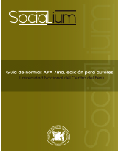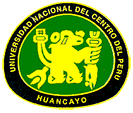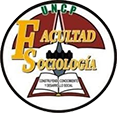The social issue and human suffering in vulnerable sectors of the Junín Region
DOI:
https://doi.org/10.26490/uncp.sl.2022.6.2.959Keywords:
Social issue, human suffering.Abstract
The objective of the study is to describe human suffering and its relationship with the new social issue in vulnerable sectors of the Junín region, the research is of a basic type, of a descriptive level, the study methods are qualitative and phenomenological, the techniques The data collection methods are: field observation, documentary analysis and in-depth interview with eight informants among older adults, adolescents, women and men heads of household in peri-urban and rural areas of the districts and provinces. The interest of the study is social and academic, to make visible daily human experiences of vulnerable sectors. The results reveal that, when facing the dissatisfaction of human needs for employment, health and housing, it influences manifestations of human suffering in vulnerable sectors of the Junín region. In conclusion, the life of the vulnerable sectors of the Junín region with time of suffering due to economic, affective and cognitive deficiencies, and other needs, express the demands of the new social issue, neglected and pending by social policies, the market and the society.
References
Antón, F. (2017). Antropología del sufrimiento social. Antropología Experimental, (17). https://doi.org/10.17561/rae.v0i17.3777
Barba-Solano, C. (2010). La nueva cuestión social en el mundo y en América Latina más allá de la pobreza. Renglones, (62), 24-44. https://rei.iteso.mx/bitstream/handle/11117/230/art_2_Nueva_cuestion_Carlos_Barba.pdf?sequence=2&isAllowed=y
Castel, R. (1997). Las metamorfosis de la cuestión social una crónica del salariado. Paidos Estado y sociedad.
Malagón, E. (2012). Fundamentos de Trabajo Social. Universidad Nacional de Colombia Facultad de Ciencias Humanas, Departamento de Trabajo Social.
Miranda, F. (2015). La descentralización centralista en el Perú: entre la crisis y el crecimiento 1970 – 2014. Universidad Nacional Mayor de San Marcos.
Monge, A. y Ravina, R. (2003). Más allá del componente objetivo en la medición de la pobreza: análisis geográficos de las dimensiones objetiva y subjetiva de la pobreza en el Perú. En E. Vásquez y D. Winkelried (Eds.), Buscando el bienestar de los pobres ¿cuán lejos estamos? (pp. 61-100). Fondo Editorial, Universidad del Pacífico.
Piola, M. (2000). Paradigmas en crisis ante los nuevos y viejos desafíos de la cuestión social en América Latina. Revista Electrónica de Geografía y Ciencias Sociales Universidad de Barcelona, 68(80).
Roca, I. y Rojas, B. (2002). Pobreza y exclusión: una aproximación al caso peruano. Andines, 31(3), 699-724. https://journals.openedition.org/bifea/6828
Rodríguez, G., Gil, J. y García, E. (1999). Metodología de la investigación cualitativa. Aljibe.
Sen, A. (2000). Desarrollo y Libertad. Editorial Planeta.
Simoes, A. (2018). La cuestión social y los problemas contemporáneos en América Latina. Conferencia de inauguración en el año académico de la Universidad de Chile. http://uchile.cl/s146656
Instituto Nacional de Estadística e Informática, (1 de febrero de 2018). Resultados definitivos: población económicamente activa Junín Censos 2017. https://www.inei.gob.pe/media/MenuRecursivo/publicaciones_digitales/Est/Lib1617/.
Dirección Regional de Salud de Junín, (10 de Mayo de (2017). Análisis de situación de Salud de la Región de Salud Junín 2017. http://www.diresajunin.gob.pe/ver_documento/id/cvd1838010ff8d61d61e9543dc0105a86edd23706.pdf/.
Downloads
Published
Issue
Section
License
Copyright (c) 2022 Elena Bullón López

This work is licensed under a Creative Commons Attribution 4.0 International License.








.jpg)















